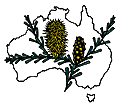Arbre dels mocadors
Handkerchief tree
Handkerchief tree





Aquest elegant i exòtic arbre és encara poc freqüent en el cultiu a Europa. Es creu que es van extingir després de l'era glacial, però, a finals del segle XIX alguns exemplars van ser trobats a Sichuan, Xina. Aquest arbre va ser portat a la Gran Bretanya el 1903 i es cultiva com una raresa en alguns jardins del clima temperat.
El seu principal atractiu són les grans bràctees blanques envoltades d'un cap petit, flor verda al maig. A causa de la forma de bràctees d'aquesta planta també es coneix com a arbre dels mocadors. En comparació amb altres arbres de mida mitjana , aquest floreix relativament jove, al voltant dels 10 anys d'edat. Les fulles són caduques, mig verdes, ovals o en forma de cor, finament dentades, peludes i suaus per sota.
L'alçada habitual és d'entre 6 i 8 metres. En bones condicions i en zones amb molt espai per al sistema radicular (parcs i jardins) pot créixer de 12-15m.
L'arbre jove amb l'edat, té una corona amb forma piramidal, cada vegada més arrodonida i ample. Necessita bon drenatge, però amb terra constantment humida, rica en humus. No creixen en zones amb molt de vent. És completament resistent a -24 º C (zona USDA 6) i pot suportar oscil.lacions temporals a -27 º C en llocs protegits.
El seu principal atractiu són les grans bràctees blanques envoltades d'un cap petit, flor verda al maig. A causa de la forma de bràctees d'aquesta planta també es coneix com a arbre dels mocadors. En comparació amb altres arbres de mida mitjana , aquest floreix relativament jove, al voltant dels 10 anys d'edat. Les fulles són caduques, mig verdes, ovals o en forma de cor, finament dentades, peludes i suaus per sota.
L'alçada habitual és d'entre 6 i 8 metres. En bones condicions i en zones amb molt espai per al sistema radicular (parcs i jardins) pot créixer de 12-15m.
L'arbre jove amb l'edat, té una corona amb forma piramidal, cada vegada més arrodonida i ample. Necessita bon drenatge, però amb terra constantment humida, rica en humus. No creixen en zones amb molt de vent. És completament resistent a -24 º C (zona USDA 6) i pot suportar oscil.lacions temporals a -27 º C en llocs protegits.
This elegant and rather exotic looking tree is still rare in cultivation in Europe. It was believed to have been extinct after the glacial era, however, in late 19th century some specimens were found in Sichuan, China. Dove tree was brought to Britain in 1903 and cultivated as a rarity in some gardens of the tempered climate.
Its main attraction are the large, white bracts surrounded around a small, green flower head in May. Owing to the bracts shape this plant is also called handkerchief tree. Compared to other medium-sized or big trees this one starts blooming relatively young = when about 10 years old. The leaves are deciduous, mid green, oval to heart-shaped, finely serrated, and softly hairy beneath.
Usual height is between 6 and 8m. Under good conditions and in areas with plenty of space for the root system (parks and large gardens) it can grow to 12-15m. Pruning will not keep it smaller, only hideous.
Young tree has a pyramidal-shaped crown, growing more rounded and broad with age. It needs well-drained but constantly moist soil, rich in humus and preferably deep. Do not grow it in windy areas. It is fully hardy to -24°C (USDA zone 6) and can withstand temporary swings to -27°C in protected locations.
Its main attraction are the large, white bracts surrounded around a small, green flower head in May. Owing to the bracts shape this plant is also called handkerchief tree. Compared to other medium-sized or big trees this one starts blooming relatively young = when about 10 years old. The leaves are deciduous, mid green, oval to heart-shaped, finely serrated, and softly hairy beneath.
Usual height is between 6 and 8m. Under good conditions and in areas with plenty of space for the root system (parks and large gardens) it can grow to 12-15m. Pruning will not keep it smaller, only hideous.
Young tree has a pyramidal-shaped crown, growing more rounded and broad with age. It needs well-drained but constantly moist soil, rich in humus and preferably deep. Do not grow it in windy areas. It is fully hardy to -24°C (USDA zone 6) and can withstand temporary swings to -27°C in protected locations.


























































.jpg)



+18.20.50.png)



















































4 comentaris:
Great photographs Xavi.
Costas
jo no creo que jo tenga visto las misma en toda mi vida...mientras en Republica Dominicana, una unica ves.
saludos
graceolsson.com/blog
Maco ho és però carai amb el nom... mocadors...
what an unusual name for an unusual tree.
I read this translated to English.
Publica un comentari a l'entrada